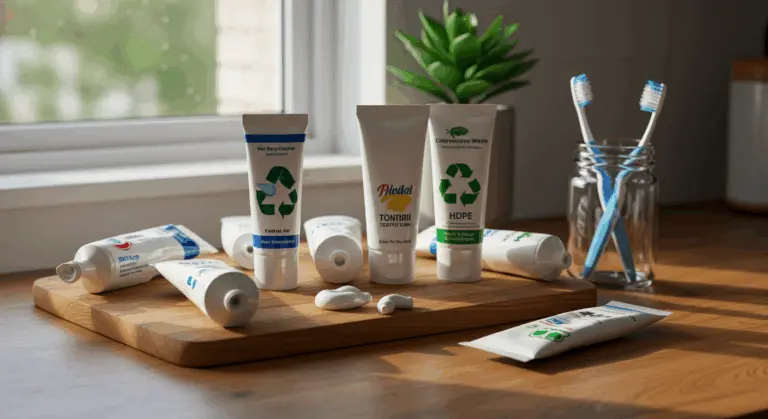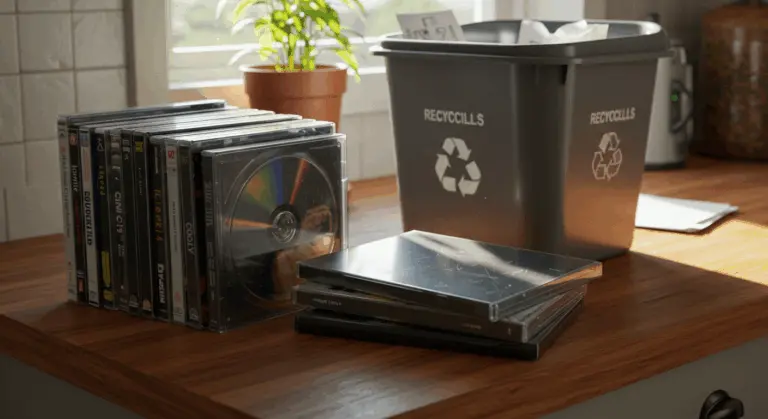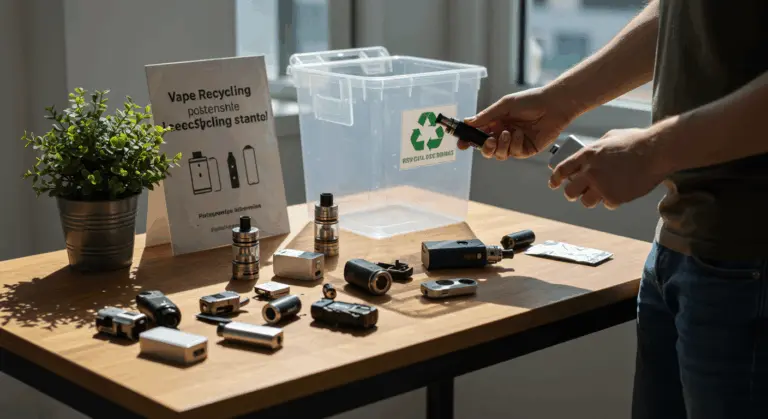Why Recycling Fluorescent Tubes is Important
For decades, fluorescent tubes have illuminated offices, schools, and homes with their energy efficiency and long lifespan. However, these lighting fixtures carry an important environmental responsibility that often goes unrecognized. The proper recycling of these common lighting fixtures isn’t just recommended—it’s essential for protecting our planet and communities.
Mercury content is the primary concern. When these tubes shatter in landfills, this toxic heavy metal seeps into soil and waterways, creating serious health hazards for both people and wildlife. While each individual tube contains only a small amount of mercury, the combined effect is significant when millions of bulbs are carelessly discarded.
In addition to protecting the environment, recycling preserves precious resources. These tubes contain valuable materials—glass, aluminum, and phosphor compounds—that can be reclaimed and transformed into new products. This approach supports a circular economy and reduces the demand for virgin materials.
Legal compliance makes proper disposal even more important. Many states and municipalities have enacted regulations that prohibit disposing of fluorescent tubes in regular trash. Under these laws, fluorescent lighting is classified as hazardous waste, requiring specialized handling and disposal protocols. Businesses that improperly dispose of these materials may face significant fines and penalties, making proper recycling not just environmentally responsible but also a matter of regulatory compliance.
Proper disposal requirements extend beyond fluorescent tubes alone. CFLs (Compact Fluorescent Lamps) and LED bulbs also demand proper disposal. While LEDs contain smaller quantities of hazardous materials like lead and arsenic compared to the mercury in fluorescents, these substances still pose environmental risks when carelessly discarded.
The bottom line is clear: fluorescent tubes have no place in your regular trash bin. They require specialized recycling programs designed to safely capture hazardous components while recovering valuable materials. Fortunately, finding these proper disposal channels is more straightforward than you might expect—and we’ll guide you through your options in the sections ahead.
How to Prepare Fluorescent Tubes for Recycling
Preparing fluorescent tubes for recycling requires careful attention to both safety and environmental responsibility. These aren’t ordinary waste items—their hazardous components and delicate construction require specialized handling protocols.
Most importantly, maintain tube integrity. A single crack releases mercury vapor into the surrounding air—something you want to avoid. Handle tubes with extreme care, preferably keeping them in their original packaging or secured within protective containers like cardboard tubes.
When extracting tubes from fixtures, always cut power first and allow recently used tubes to cool completely. Gently rotate the tube to disengage it from the socket—never yank or pull directly. Don protective gloves throughout this process to shield your hands from potential glass breakage and any phosphor powder that may coat older tubes.
For multiple tube transport, wrap each one individually in newspaper or bubble wrap to prevent collision damage. Secure them in a sturdy box and prominently label it “Fragile – Fluorescent Tubes for Recycling” to ensure careful handling throughout the journey.
Where to Find Local Recycling Locations
Multiple reliable resources can guide you to recycling options in your vicinity:
Retailers and Facilities Accepting Fluorescent Tubes
Several types of retailers and facilities provide convenient recycling options:
-
Major Retailers: ManyHome Depot andLowe’s stores offer free in-store recycling programs. Call your local store to confirm participation and any size limitations.
-
Specialized Recycling Centers: Local hazardous waste facilities are equipped to handle mercury-containing products and often accept large quantities, though some may charge a small fee.
-
Local Hardware Stores: Many independent hardware stores provide community recycling services and may accept a wider variety of bulbs.
-
Mail-Back Programs: For areas with limited options, companies likeTerra Cycle andLamp Master offer prepaid kits to safely ship tubes for recycling.
-
Electrical Supply Distributors: Commercial customers can ask their electrical suppliers about take-back programs for used products.
Understanding Hazardous Waste Regulations
Mercury content classifies fluorescent tubes as hazardous waste regulations—a classification that reflects the serious risks this substance poses to human health and the environment. The Environmental Protection Agency (EPA) designates these lighting products as “universal waste,” a specialized subcategory of hazardous waste designed to encourage responsible recycling practices.
The Universal Waste Rule, combined with broader environmental legislation, simplifies management requirements for specific hazardous wastes. This regulatory framework promotes environmentally sound recycling while reducing bureaucratic barriers.
These regulations strictly prohibit businesses and households from disposing of fluorescent tubes in standard trash containers or dumpsters. Why such stringent rules? When tubes fracture in landfills or incinerators, mercury escapes into air, water, and soil systems.
Local environmental agencies and waste management authorities enforce these mandates through various mechanisms, including substantial fines for improper disposal. Many states have enacted producer responsibility laws requiring manufacturers and retailers to establish recycling programs for their products.
Beyond environmental protection, these regulations support resource recovery by allowing the reclamation of valuable materials—glass, aluminum, and phosphor powder—while ensuring worker safety through standardized handling protocols.
Tips for Safe Disposal of Broken Tubes
When a fluorescent tube breaks, the released mercury vapor requires immediate action. Follow these critical safety protocols without delay:
-
Ventilate the Area: Immediately have everyone, especially children and pets, leave the room. Open windows and turn off central heating or air conditioning for at least 15 minutes.
-
Use Proper Gear: Wear disposable gloves.Never use a vacuum or broom, as they can spread mercury particles into the air.
-
Clean Up Debris: Use stiff paper or cardboard to scoop up glass fragments and powder. Use sticky tape (e.g., duct tape) to pick up any remaining small particles.
-
Seal and Dispose: Place all debris and cleanup materials, including the gloves, in a sealable container like a glass jar. Clearly label it “Broken Fluorescent Tube—Contains Mercury” and take it to a local hazardous waste facility.
Always consult the EPA’s website for the most current cleanup guidelines. Proper disposal safeguards your health while preventing widespread environmental contamination.
Frequently Asked Questions About Fluorescent Tube Recycling
Navigating fluorescent tube disposal often raises important questions. Here are comprehensive answers to the most frequently asked inquiries about this recycling process:
Why can’t I throw fluorescent tubes in the regular trash?
Mercury content makes fluorescent tubes hazardous. This toxic substance can cause environmental contamination and serious health risks when released. Tubes that break in landfills allow mercury to leach into soil and water systems—which is why proper recycling is legally mandated in numerous jurisdictions.
Where are the closest places to recycle my fluorescent tubes?
Many convenient recycling options are available. Major retailers like Home Depot, Lowe’s, and IKEA frequently accept intact tubes for recycling. Local hazardous waste facilities, specialized recycling centers, and municipal collection events offer additional options. Online tools like Earth911.com can pinpoint the nearest location accurately.
Do I need to prepare the tubes in any special way before recycling?
Maintaining tube integrity is important. Some facilities prefer tubes remain in original packaging or wrapped in newspaper to prevent transport damage. Always verify specific preparation requirements with your chosen recycling location—protocols can vary significantly between facilities.
Is there a fee for recycling fluorescent tubes?
Costs vary widely by location and facility type. Many retailers and municipal programs offer complimentary recycling, while others impose modest per-tube fees. Hazardous waste facilities sometimes designate free collection days for residents. Calling ahead to inquire about potential costs is always wise.
What happens to fluorescent tubes after they’re recycled?
The recycling process involves crushing tubes within controlled environments that capture mercury vapor. Then, glass, metal, and phosphor powder undergo separation for individual recycling streams. Glass and metal typically become raw materials for new products, while mercury is either repurposed for specialized applications or safely sequestered.
Are all types of fluorescent lighting recycled the same way?
While the basic processes are similar, different fluorescent lighting types—tubes, CFLs, circular fluorescents—may require slightly varied handling during recycling. However, all contain mercury and demand proper recycling facility disposal rather than regular trash disposal.
What should I do if I can’t find a recycling location near me?
Limited local options don’t have to prevent responsible disposal. Mail-back programs provide convenient kits for safely shipping tubes to recycling facilities. Various lighting suppliers and environmental organizations offer these services. Additionally, contact your local waste management authority—they often maintain information about periodic collection events or alternative disposal solutions.




